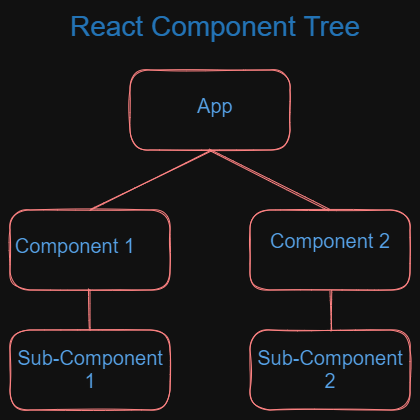Demystifying React Context: A Comprehensive Guide
 Abdul Shaik
Abdul ShaikReact Context is a powerful tool that addresses the challenges of prop drilling and state sharing in complex React component hierarchies. This concise yet detailed guide will take you through the ins and outs of React Context, why you need it, its practical implications, and how to use it effectively.
What is React Context?
State Sharing Mechanism: React Context provides a mechanism for components to share data without the need to pass props through intermediary components.
Global Data: It offers a way to create global variables that can be accessed by any component within a React application.
Avoid Prop Drilling: React Context solves the “prop drilling” issue, where data needs to be passed through multiple levels of components.
Why Do We Need React Context?
Prop Drilling Issue: When dealing with deeply nested component trees, passing props down several levels can become unwieldy and error-prone.
Shared State: For scenarios where multiple components require access to the same data, such as user authentication or theme settings.
Cleaner Code: React Context helps maintain clean and readable code by eliminating the need for excessive props and simplifying component interactions.
Illustration of a component hierarchy demonstrating the difference between using Context and not using it

Without Context: Passing props from App to SubComponent1 and SubComponent2 can be cumbersome.
With Context: The App sets up a context with shared data. SubComponent1 and SubComponent2 access data directly from the context, eliminating the need for prop drilling.
Steps to Use React Context:
Create a Context: Initiate a context instance using
React.createContext(), specifying the initial data.Provide Data: Wrap the relevant components in a
<Context.Provider>component, passing the shared data as a prop.Consume Data: In any component requiring access to the shared data, utilize the
useContext()hook to access the data from the context.Update Data (Optional): If the shared data needs modification, define methods to update the context and provide them along with the data in the context value.
Summary:
React Context is a crucial tool for effective state management and data sharing within React applications. Here are the key takeaways:
Simplified State Sharing: React Context offers a seamless way to share data between components without resorting to cumbersome prop passing.
Global Data Access: It enables the creation of global variables that can be accessed across the entire application, saving time and effort.
Resolution of Prop Drilling: React Context eliminates the need for prop drilling, streamlining component interactions and reducing code complexity.
Enhanced Code Readability: By minimizing the clutter of props, React Context promotes cleaner and more readable code, making maintenance easier.
Create a Context: Begin by creating a context instance using
React.createContext(), specifying the initial data to be shared.Provide Data: Wrap relevant components in a
<Context.Provider>component, passing the shared data as a prop.Consume Data: Utilize the
useContext()hook within components that require access to the shared data.Optional Data Updates: If needed, define methods to update the context and provide them along with the data in the context value.
Subscribe to my newsletter
Read articles from Abdul Shaik directly inside your inbox. Subscribe to the newsletter, and don't miss out.
Written by
